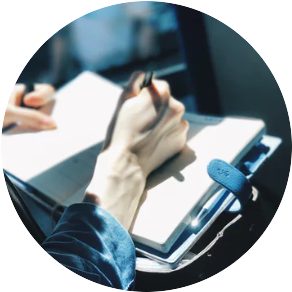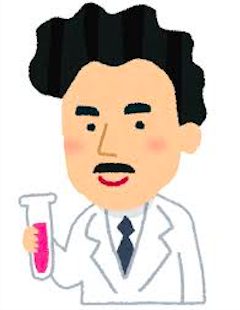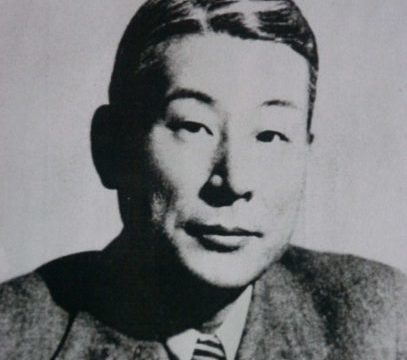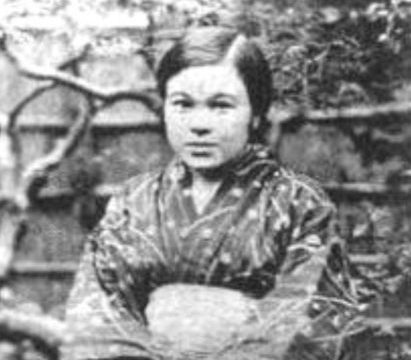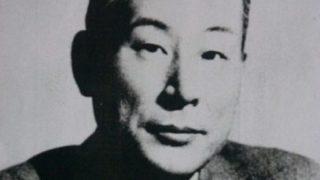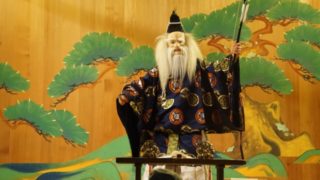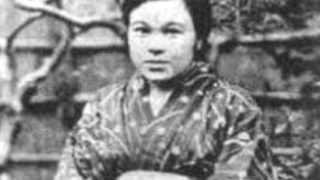I was studying for a curator of a museum in my school days. I still like to participate in workshops and art appreciation.
This time I will talk about Yayoi Kusama.
Contents
Intro
Her life was a severe fight because of her disease. Since her childhood, she was having schizophrenia, hence she has seen illusion and hallucination. She drew paintings to fight her anxiety and fear. She had huge passion to sublimate them into art.
In 1957, she started to live in the United States and tried to create her original art. In the beginning, it was not easy and she even could not have bought enough food.
At last, she made her representative silk screen art-work, “Infinite Nets”. Because of that, she became famous among artists in the United States.
After winning the fame
After her getting famous, she was called “Queen of the avant-garde”. She was not only an artist but she was also fighting for human rights , opposing to the Vietnam War for instance. She organized nude performance, called “Happening” in NY at first. Then, she wrote the public letter to President Nixon(The title is “Open Letter to My Hero Richard M. Nixon”).
Later on, her partner Josef Cornel had passed away and she could not have continued to do art-work in the United States. She came back to Japan with deep sadness. However, she started career as a novel writer.
Biography
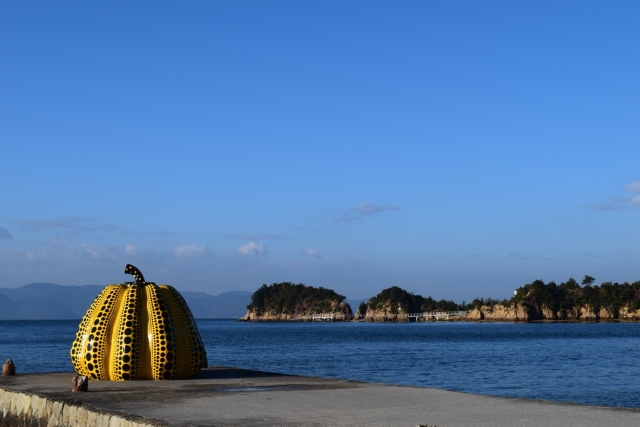
There is Yayoi Kusama’s work in Naoshima Kagawa Prefecture.
On March 22, 1929 in Matsumoto, Nagano, Yayoi Kusama was born into a wealthy family of merchants in Matsumoto, Nagano prefecture.
In 1957, she moved to the United States.
In 1960’s, she got famous and was called “The Queen of Avant-garde Art” among artists in America.
In 1960’s, the time has changed. American students have been protesting against Vietnam War. Also, Marilyn Monroe died and Martin Luther King, Jr. and Malcolm X were killed. The Great Cultural Revolution had occurred in China. People in the world wanted “Love&Peace” and it has started the movement of human rights.
The movement of human rights has reached Japan and such events as students protest in Tokyo University have occurred. However, it was not on a huge scale, since Vietnam War was considered to be the problem of western people and Japan was more focus on economic growth.
At that time, in 1968, Yayoi Kusaka created short film,”Kusaka’s Self Obliteration” This movie won a prize at the Fourth International Experimental Film Competition in Belgium and at the Second Maryland Film Festival and the second prize at the Ann Arbor Film Festival.
Since 1962, Yayoi Kusaka got along with Avant-garde film director Joseph Cornell. Their relationship had huge influence on her film-work.
Meeting many artists in NY including Joseph Cornell inspired her to create soft-sculpture art by using clothes. Furthermore, she made her own style by using lightbulb, mirror ball and mirror in 1964.
In 1967, she did nude-performance called “Happening”. She put body painting on her naked body. She also performed in Wall Street and in front of United Nations Headquarters.
In 1968, she sent the public letter to President Nixon(“Open Letter to My Hero Richard M. Nixon”). She wrote “Let’s forget ourselves, dearest Richard, and become one with the Absolute, all together in the altogether. As we soar through the heavens, we’ll paint each other with polka dots, lose our egos in timeless eternity, and finally discover the naked truth: You can’t eradicate violence by using more violence. This truth is written in spheres with which I will lovingly, soothingly, adorn your hard masculine body. Gently! Gently! Dear Richard. Calm your manly fighting spirit!” Also, She wrote a musical scenario for “Bonnie and Clyde”.
In 1973, she came back to Japan as her sincere friend Joseph Cornell had passed away and she got illness.
During 1980’s-1990’s, she gathered attention again as her retrospective exhibition took place in the United States.
In April of 2016, she was chosen as The 100 Most Influential People in the World
By TIME Magazine.
In November of the same year, she was awarded with Order of Culture Merit in Japan.
Her personality
She had enormous passion for living and arts.
She embodied “Here and Now”. She tried new style of arts and never stop to create something new.
3 things you could learn from her
1, Believe in yourself
According to her essay, she has never been influenced by anyone because she strongly believed in herself. She mentioned in her essay: “I have perfect confidence for my dots arts. I don’t let other things to distract me.”
She has been suffering from schizophrenia and has seen illusion and hallucination since her childhood. Nowadays, schizophrenia is curable but it was incurable disease at that time.
No one believed what she saw. She felt disappointed not being understood by anyone. She could see net and dot pattern. She also heard that plants talked to her. She has never let herself down. She sublimates her disease into art.
Main reason for her depression was that the most was that people could not see the dots and net pattern in daily life and they believed that she is insane. Only her art works were giving her motivation for living. She has never given up to draw what she have been seeing and kept on claiming “I am not insane. I am an artist”. For her, the art was the only way to communicate with people and share the sympathy.
She had a strong personality. She kept self-affirmation in her mind and she was not afraid to make her own way, different from the others.
2, Relationships that kept her alive in the time of hunger and poverty
In 2009, she was interviewed by the film director, Doug Aitken. She mentioned her representative silk screen art-work, “Infinite Nets”. She said that she had created “Infinitive Nets” because she wanted to tell people that her mind was infinitive like the Universe.
“Infinitive Nets” was connected with her illusions as she had schizophrenia. However there is a story behind.
In early 1960’s, she started to live in NY. But she had no family or friends there. She was very poor. She had constantly felt hunger and she lived in a poor apartment without a heater. She was even collecting and leftovers from the street and eating them. Even though, she has never stopped to draw in the day and night.
One morning, she had some strange experience. In her eye, her room was covered by net patterns and those patterns were long as far as she could see outside. In the illusion, she saw dots patterns as well. She felt infinity and eternity from those illusions because the dots looked as if uncountable atoms were floating.
Before she became an artist, she had to struggle with her disease and its symptoms. She dreamt to be an artist as she could sublimate her disease into art. Her art-work was supported by a lot of artists and art-communities. They helped each other and discussed their arts. “Infinitive Nets” have been bought by the one of her friends and sculptor Frank Stela and he displayed it in his living room.
3,Power to find light from darkness
She wrote about herself in the essay and it is said that “Everybody has difficulty for living. You should face and overcome them to create your life. If you have problem, you should be thankful for God. Don’t run away from your faith. Face it with all your strength.” Prior to going to the U.S., Yayoi Kusama was drawing attention as a painter in Japan.
In her early career in Japan, she had good reputation and her exhibitions were successful. Her paintings were sold well and one of them called “Sprout” became the cover of the Japanese art magazine “Mizue”. She learnt about traditional Japanese painting in the art-collage in Kyoto but she was unsatisfied to draw the orthodox style’s art by following the old-fashioned perspective. From the bottom of her heart, she realized that only the art can heal her fear and anxiety. For her, to leave Japan and live in America was an unavoidable situation. She purely believed in the power of art. Even it was tough, she has never given up to find the hope and build her life up in America.
I was mostly writing about her life in 1960’s in USA, describing such aspects of her life as Infinitive Nets, Body painting, films and conceptual arts. Also, I was writing about her disease, which is connected with her art.
Here, I would like to write about her life after those days. She came back to Japan because her partner, Joseph Cornel had passed away. It made huge impact on her and she could not stay in America anymore. In Japan, she stayed at the hospital, but she was writing stories and some of them were published in Japan. In 1983, one of her novel “Christopher” got prized at “Yasei-Jidai” literature prize, which Kadokawa publishing company had organized. This story is about an Afro-American living in NY. He is studying at the university and works as a male-prostitute. There are some sex-scenes, but she tried to describe the main character as a person with a desire to live. The main theme is also about color-race and young lifestyle. If you already have seen her art-works, I recommend you to read this novel. It gives you the energy for living as much as her art-works do.
The novel is not so popular because Yayoi Kusama is an artist and a painter. However, you can enjoy original approach of the author and her unique writing style.
Currently (2017), she is 88 years old. She wakes up in early morning and still works for 10 hours every day. I would like all of you to learn from her story how to find hope and inner strength to fight with struggles.
Next, I will post an article with Japanese together for those who want to learn Japanese.
水玉の世界「前衛の女王」草間彌生から学ぶ!今を自分らしく生きる力
“The Queen of Avant-garde Art”-Yayoi Kusaka
幼少期から患っていた統合失調症による幻聴や幻覚と向き合い、不安や恐怖と闘うために描いていた絵画を、芸術に昇華させ、その後の長い人生の生きる糧とした。
日本で受けた表現への制約、理不尽な扱いから息苦しさを感じ、自分の表現の場を求めてアメリカに渡り、ひどい経済状態の空腹と寒さの中でも自分の信じる芸術で創作活動を続ける。
シルクスクリーン作品「無限の綱」を通して同じ芸術家から共感を得、アメリカで草間彌生さんを認めてくれる人間関係から命をつなぎ、さらなる表現を開花させる。
Intro
Her life was a severe fight because of her disease. Since her childhood, she was having schizophrenia, hence she has seen illusion and hallucination. She drew paintings to fight her anxiety and fear. She had huge passion to sublimate them into art.
In 1957, she started to live in the United States and tried to create her original art. In the beginning, it was not easy and she even could not have bought enough food.
At last, she made her representative silk screen art-work, “Infinite Nets”. Because of that, she became famous among artists in the United States.
「前衛の女王」という名声はあっても経済状態は変わらなかったが、苦しい状況にある人たちのために(ベトナム戦争の終結や自由や人権を訴える)ヌードパフォーマンス「ハプニング」を行い、ニクソン大統領に公的書簡「Open Letter to My Hero Richard M. Nixon」を送った。
アメリカでの良き理解者でありパートナーだったジョゼフ・コーネル死去により、体調を崩し日本で入院しても、小説を書いて生きることと創作することを続けた。
After winning the fame
After her getting famous, she was called “Queen of the avant-garde”. She was not only an artist but she was also fighting for human rights , opposing to the Vietnam War for instance. She organized nude performance, called “Happening” in NY at first. Then, she wrote the public letter to President Nixon(The title is “Open Letter to My Hero Richard M. Nixon”).
Later on, her partner Josef Cornel had passed away and she could not have continued to do art-work in the United States. She came back to Japan with deep sadness. However, she started career as a novel writer.
草間彌生の生涯と人柄
1)「草間彌生」さんの生涯
1929年3月22日、長野県松本市で種苗業を営む裕福な家庭に生まれ、2017年12月現在は東京を拠点に創作活動を行っている。
草間彌生さんは1957年に芸術家としての活動拠点を一度アメリカ合衆国に移し、1960年代には「前衛の女王」と呼ばれるようになる。
Biography
On March 22, 1929 in Matsumoto, Nagano, Yayoi Kusama was born into a wealthy family of merchants in Matsumoto, Nagano prefecture.
In 1957, she moved to the United States.
In 1960’s, she got famous and was called “The Queen of Avant-garde Art” among artists in America.
草間彌生さんが芸術家として最も活躍した1960年代のアメリカではベトナム戦争がはじまり、セクシー女優マリリン・モンローが死去、黒人公民権運動家マルコム・Xやキング牧師が暗殺され、中国では文化大革命が起った。
世界では「愛と平和と自由」を叫ぶ、人権運動が盛んな時代であった。
In 1960’s, the time has changed. American students have been protesting against Vietnam War. Also, Marilyn Monroe died and Martin Luther King, Jr. and Malcolm X were killed. The Great Cultural Revolution had occurred in China. People in the world wanted “Love&Peace” and it has started the movement of human rights.
日本では、東京大学で学生による社会文化運動だけ目立。
何故なら経済の高度成長期真っ只中で、皇太子徳仁親王が誕生し、日本は裕福な時代であったからだ。
そんな時代背景の中、1968年、インスタレーションを映像化した自作自演作品「草間の自己消滅」という短編映画が、第4回ベルギー国際短編映画祭入賞、第2回アン・アーバー映画祭銀賞受賞、第2回メリーランド映画祭入賞した。
The movement of human rights has reached Japan and such events as students protest in Tokyo University have occurred. However, it was not on a huge scale, since Vietnam War was considered to be the problem of western people and Japan was more focus on economic growth.
At that time, in 1968, Yayoi Kusaka created short film,”Kusaka’s Self Obliteration” This movie won a prize at the Fourth International Experimental Film Competition in Belgium and at the Second Maryland Film Festival and the second prize at the Ann Arbor Film Festival.
1962年から親しくしていた前衛映像作家でアーティストのジョセフ・コーネル氏との交流が映像創作に大きな影響を与えていた。
Since 1962, Yayoi Kusaka got along with Avant-garde film director Joseph Cornell. Their relationship had huge influence on her film-work.
ジョセフ・コーネル氏との出会い、NYで表現を探求するアーティスト達との交流から表現方法に布を用いたソフト・スカルプチャー作品も手掛け始め、1964年には、現在でも展覧会会場で見られるような、電飾やミラーボール、鏡を用いた彫刻作品を空間表現するスタイルが確立する。
Meeting many artists in NY including Joseph Cornell inspired her to create soft-sculpture art by using clothes. Furthermore, she made her own style by using lightbulb, mirror ball and mirror in 1964.
1967年、ベトナム戦争への抗議活動のため、ボディーペインティングでヌードパフォーマンスを行う作品「ハプニング」をウォール街や国連本部前で行った。
In 1967, she did nude-performance called “Happening”. She put body painting on her naked body. She also performed in Wall Street and in front of United Nations Headquarters.
1968年にはヌードパフォーマンスだけではなく、当時のアメリカ合衆国大統領ニクソン氏に公開書簡「Open Letter to My Hero Richard M. Nixon」を送っている。
内容は、「暴力を使って暴力を根絶することはできません。優しく、優しくしてください、親愛なるリチャード。あなたの雄々しい闘争心をどうか鎮めてください」と英語で訴えかけた。
「草間の自己消滅」が第四回ベルギー国際短編映画祭で入賞を果たした年には、「俺たちに明日はない」のミュージカル脚本も手掛けている。
In 1968, she sent the public letter to President Nixon(“Open Letter to My Hero Richard M. Nixon”). She wrote “Let’s forget ourselves, dearest Richard, and become one with the Absolute, all together in the altogether. As we soar through the heavens, we’ll paint each other with polka dots, lose our egos in timeless eternity, and finally discover the naked truth: You can’t eradicate violence by using more violence. This truth is written in spheres with which I will lovingly, soothingly, adorn your hard masculine body. Gently! Gently! Dear Richard. Calm your manly fighting spirit!” Also, She wrote a musical scenario for “Bonnie and Clyde”.
1973年、アメリカでの良き理解者であった親友の死をきっかけに体調を崩し、日本へ帰国。
1980年代後半から1990年代にアメリカで行われた回顧展で再び世界から注目を浴びる。
2016年4月に米誌タイムの「世界で最も影響力がある100人」に選ばれ、同年11月には皇居でノーベル賞受賞者とも肩を並べて文化勲章が授与された。
In 1973, she came back to Japan as her sincere friend Joseph Cornell had passed away and she got illness.
During 1980’s-1990’s, she gathered attention again as her retrospective exhibition took place in the United States.
In April of 2016, she was chosen as The 100 Most Influential People in the World
By TIME Magazine.
In November of the same year, she was awarded with Order of Culture Merit in Japan.
2)「草間彌生」さんの人柄
自分の中の情熱に向き合い、生きることそのものを創作活動に注ぎ込む。
一つのことに一生懸命取り組み、常に「今からだ」という気持ちで闘い続けてきた女性である。
Her personality
She had enormous passion for living and arts.
She embodied “Here and Now”. She tried new style of arts and never stop to create something new.
草間彌生から学ぶ3つのこと
3 things you could learn from her
1)困難にあっても、自分を信じ奮い立たせ強く生きる力
「私は人の影響を受けたことがありません。自分自身の芸術を信じているからです」
「私はこの水玉一つで立ち向かってやる。これに一切を賭けて、歴史に反旗をひるがえすつもりでいた」
草間彌生著、集英社新書「水玉の履歴書」に書かれている。
1, Believe in yourself
According to her essay, she has never been influenced by anyone because she strongly believed in herself. She mentioned in her essay: “I have perfect confidence for my dots arts. I don’t let other things to distract me.”
幼少期から患っている統合失調症の影響で幻覚や幻聴とともに生きてきた草間彌生さん。統合失調症は、現代の発達したカウンセリング治療や投薬などで治すことのできる精神病と言われるようになったが、発症のメカニズムは解明されていない。
草間彌生さんが発症した1930年代では不治の病であった。
幼少期、実家の花畑でスケッチをしていると植物が人の言葉で語り掛けてたり、見るものすべてに網目や水玉模様が浮かぶ、幻聴と幻覚の世界に苦しんでいた。
しかし、自分の内側からあふれ出す恐怖と生死をかけて闘い、生きるために幻聴や幻覚の世界を芸術に昇華させた。
She has been suffering from schizophrenia and has seen illusion and hallucination since her childhood. Nowadays, schizophrenia is curable but it was incurable disease at that time.
No one believed what she saw. She felt disappointed not being understood by anyone. She could see net and dot pattern. She also heard that plants talked to her. She has never let herself down. She sublimates her disease into art.
眼に映り、心で感じるものがすべて恐怖の対象ではなく、花を美しいと感じ、その心の動きと自分の見ている世界を描き、絵を通じて自分の価値観を多くの他者と共感できるコミュニケーションを確立できた。草間彌生さんが死に物狂いで昇華させた芸術が、彼女自身を奮い立たせ生きる力を与えたのだ。誰かと同じことをできるだけが生きる方法ではない、自分自身を認め、他者と関わることを恐れなければ、自分を見失わずに強く生きられる。そんな、強い気持ちが伝わってくる名言。
Main reason for her depression was that the most was that people could not see the dots and net pattern in daily life and they believed that she is insane. Only her art works were giving her motivation for living. She has never given up to draw what she have been seeing and kept on claiming “I am not insane. I am an artist”. For her, the art was the only way to communicate with people and share the sympathy.
She had a strong personality. She kept self-affirmation in her mind and she was not afraid to make her own way, different from the others.
2)飢えと貧困の中で生き抜く力と生かされる人間関係
2, Relationships that kept her alive in the time of hunger and poverty
「『無限の網』は自分の生命や宇宙、私の思想も無限であることを表現している。」映像作家ダグ・エイケン氏から2009年に受けたインタビューで草間彌生さんが応えた言葉。
「無限の綱」とは、1960年に制作されたシルクスクリーン作品である。
アメリカに渡り、シアトルからNYへ拠点を移した頃は、公園のハトと落ちているパンくずを拾って食べたこともあるくらいひどい経済状態であった。
自分の信じる芸術を頼りに、知人のいないNYで創作活動をするも、孤独と飢えで自殺も考えた時期であった。
寒さと飢えで眠れない夜は絵を描いていた草間彌生さん、ある朝不思議な体験をする。
部屋中が編み目で覆われ、その編み目は窓の外から遠くまで続いていたのだ。
おびただしい水玉は全宇宙に存在する生命体を構成する粒子のようで、永遠や無限大を感じたことから「無限の綱」が描き出されていた。
草間彌生さんが患っていた統合失調症の見せた幻覚と言ってしまえば、それだけである。
しかし、病気すら自分の生きる糧に変え、創作への希望に変えたのは草間彌生さん自身であった。
「無限の綱」は画家で彫刻家のフランク・ステラ氏が買い上げ、長いこと彼の居間に飾られた。
同じ芸術家から共感を得られた草間彌生さんは、ひどい貧困の中、芸術家たちとの人間関係で命そのものをつなぎ、刺激を受け、新たな芸術表現を開花せたのである。
In 2009, she was interviewed by the film director, Doug Aitken. She mentioned her representative silk screen art-work, “Infinite Nets”. She said that she had created “Infinitive Nets” because she wanted to tell people that her mind was infinitive like the Universe.
“Infinitive Nets” was connected with her illusions as she had schizophrenia. However there is a story behind.
In early 1960’s, she started to live in NY. But she had no family or friends there. She was very poor. She had constantly felt hunger and she lived in a poor apartment without a heater. She was even collecting and leftovers from the street and eating them. Even though, she has never stopped to draw in the day and night.
One morning, she had some strange experience. In her eye, her room was covered by net patterns and those patterns were long as far as she could see outside. In the illusion, she saw dots patterns as well. She felt infinity and eternity from those illusions because the dots looked as if uncountable atoms were floating.
Before she became an artist, she had to struggle with her disease and its symptoms. She dreamt to be an artist as she could sublimate her disease into art. Her art-work was supported by a lot of artists and art-communities. They helped each other and discussed their arts. “Infinitive Nets” have been bought by the one of her friends and sculptor Frank Stela and he displayed it in his living room.
3)どんなに打ちひしがれても自ら希望を見出す力
-Find delight from darkness
「理不尽な状況に打ち勝つということは、追い詰められた状況に打ち勝つということでもあり、人間として生まれてきたからこその試練なのです。
だから、私はいつも自分の全人格をもって苦しい状況に立ち向かってきました。そういうことに巡り合ったのも、人の世の運命なのです。」
草間彌生さん著書で集英社新書「水玉の履歴書」に書かれている言葉。
アメリカに渡る前、草間彌生さんは日本でも画家としてとても注目されていたのである。
She wrote about herself in the essay and it is said that “Everybody has difficulty for living. You should face and overcome them to create your life. If you have problem, you should be thankful for God. Don’t run away from your faith. Face it with all your strength.”
300点近い作品を展示する個展は何度も開かれ、そのたび絵は売れ、1955年には美術雑誌「みづゑ」で作品「芽」が表紙を飾るほどであった。しかし、京都市立美術工芸学校で日本画を学んだ時に、伝統を継承する技術者として、決まりきった価値観の中でしか表現されない美術界を息苦しく感じるのであった。
なぜなら、絵を描く行為そのものが、自分の内側から湧いてくる恐怖や不安と闘う術であり、自分自身を癒す行為でもあったからだ。
自分らしさを表現できる場をアメリカに求めたのは、生きるために必要な選択であり、希望を見出し困難に立ち向かうことそのものが生きることだと自分を奮い立たせたからである。
草間彌生さんから苦境にあっても希望を見出す力を学ぶ
In her early career in Japan, she had good reputation and her exhibitions were successful. Her paintings were sold well and one of them called “Sprout” became the cover of the Japanese art magazine “Mizue”. She learnt about traditional Japanese painting in the art-collage in Kyoto but she was unsatisfied to draw the orthodox style’s art by following the old-fashioned perspective. From the bottom of her heart, she realized that only the art can heal her fear and anxiety. For her, to leave Japan and live in America was an unavoidable situation. She purely believed in the power of art. Even it was tough, she has never given up to find the hope and build her life up in America.
この記事では、
草間彌生さんの芸術家として全盛期だった1960年代にアメリカで製作された絵画や版画、映像、ボディーペインティング、コンセプチュアル・アートなどを中心に、
また、草間彌生さんが病気や困難を生きる糧にしたかを紹介してきた。
ここでは、帰国後の活動についてここで触れたい。
親友であり、パートナーであったジョゼフ・コーネル氏の死去により、体調を崩し、日本で入院生活を送っていた時も、いくつか小説を執筆し、うち1983年角川書店から「クリストファー男娼窟」を出版し第十回野性時代新人文学賞を受賞しているのである。「クリストファー男娼窟」は、NYで男娼をしながら大学を出る黒人男性が主人公の小説。男娼をしている主人公なので、書かれている性描写やエロティックな場面もあるが、そういった場面でさえ、自分の持っているものすべてを使って、人種や貧困という状況であっても目標や希望を見出し、生きる力に変えた姿が描かれている。
草間彌生さんの芸術作品を美術館や巡回展で見たことがあっても小説は読んだことがないという方、今、生きることを難しいと考えている方におすすめの一冊。
I was mostly writing about her life in 1960’s in USA, describing such aspects of her life as Infinitive Nets, Body painting, films and conceptual arts. Also, I was writing about her disease, which is connected with her art.
Here, I would like to write about her life after those days. She came back to Japan because her partner, Joseph Cornel had passed away. It made huge impact on her and she could not stay in America anymore. In Japan, she stayed at the hospital, but she was writing stories and some of them were published in Japan. In 1983, one of her novel “Christopher” got prized at “Yasei-Jidai” literature prize, which Kadokawa publishing company had organized. This story is about an Afro-American living in NY. He is studying at the university and works as a male-prostitute. There are some sex-scenes, but she tried to describe the main character as a person with a desire to live. The main theme is also about color-race and young lifestyle. It gives you the energy for living as much as her art-works do.
一文読むごとにイメージがしみ込んでくるような文面で、小説家の書いた文章とは違う読みやすさがある。
The novel is not so popular because Yayoi Kusama is an artist and a painter. However, you can enjoy original approach of the author and her unique writing style.
2017年現在、88歳という高齢でありながら毎日朝から10時間は創作し続けている草間彌生さんの生きる力となった水玉の世界に触れて、今を自分らしく生きる糧が何か、ご自身の内面と対話し、苦境にあっても希望を見出す自分自身の力に気づいてほしい。
Currently (2017), she is 88 years old. She wakes up in early morning and still works for 10 hours every day. I would like all of you to learn from her story how to find hope and inner strength to fight with struggles.


